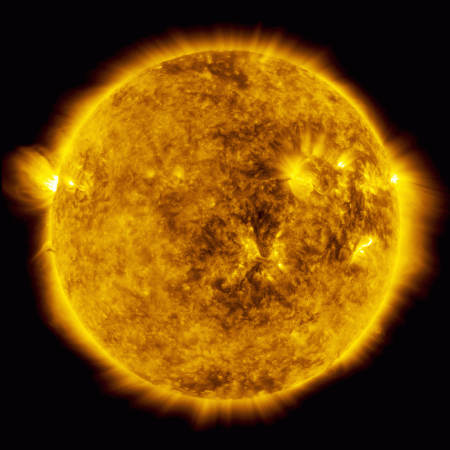
NASA's Solar Dynamics Observatory (SDO) saw a partial solar eclipse in space when it caught Moon passing in front of Sun on May 25. The lunar transit lasted almost an hour, between 2.24 and 3.17 pm EDT, with Moon covering about 89 percent of the Sun at the peak of its journey across the Sun's face.
Also Read: NASA: Failed supernova gives birth to a black hole
While Moon's edge appears smooth in these images, it's actually quite uneven. The surface of Moon is rugged, sprinkled with craters, valleys and mountains. Peer closely at the image, and you may notice the subtle, bumpy outline of these topographical features.
On August 21, SDO will witness another lunar transit, but Moon will only barely hide part of the Sun. However, on the same day, a total eclipse will be observable from the ground.
A total solar eclipse — in which Moon completely obscures Sun — will cross the United States on a 70-mile-wide ribbon of land stretching from Oregon to South Carolina. Throughout the rest of North America — and even in parts of South America, Africa, Europe and Asia — a partial eclipse will be visible.
NASA also revealed that the rugged terrain of Moon leads to what we see on Earth during total solar eclipse. Light rays stream through lunar valleys along Moon's horizon and form Baily's beads, bright points of light that signal the beginning and end of totality.
The Moon's surface also shapes the shadow -- known as umbra -- that races across the path of totality: Sunlight peeks through valleys and around mountains, adding edges to the umbra. These edges warp even more as they pass over Earth's own mountain ranges.
Visualisers used data from NASA's Lunar Reconnaissance Orbiter, or LRO, coupled with NASA topographical data of Earth, to precisely map the upcoming eclipse in unprecedented detail. This work shows the umbral shape varies with time, and is not simply an ellipse, but an irregular polygon with slightly curved edges.














